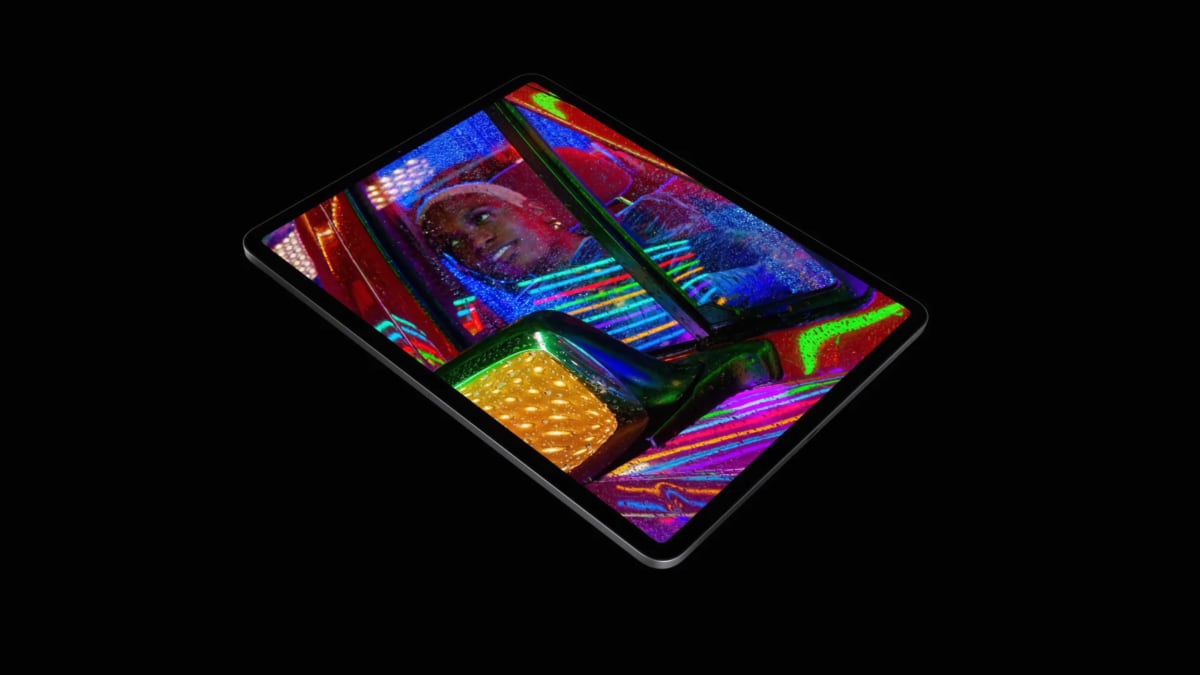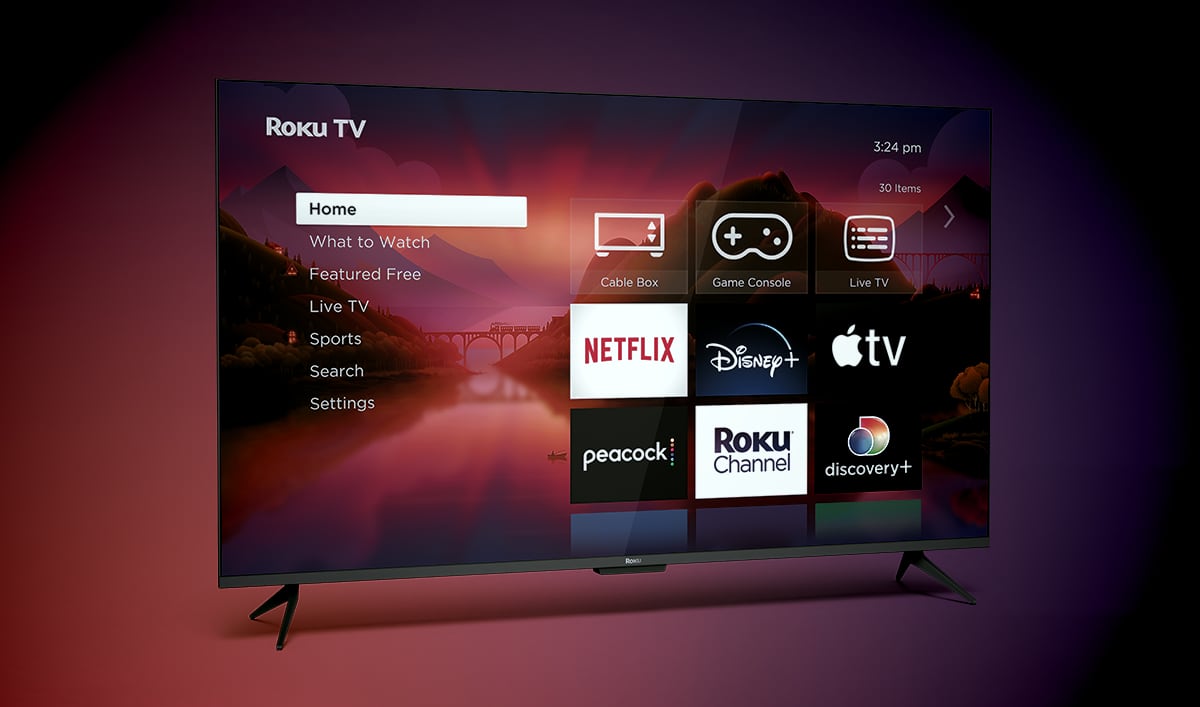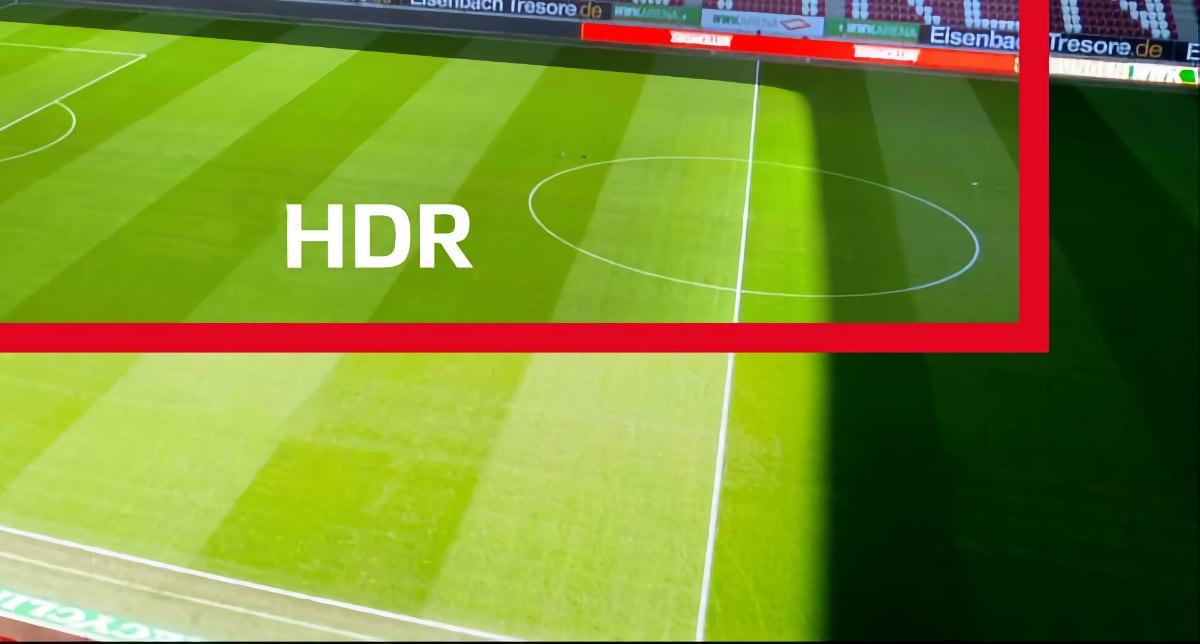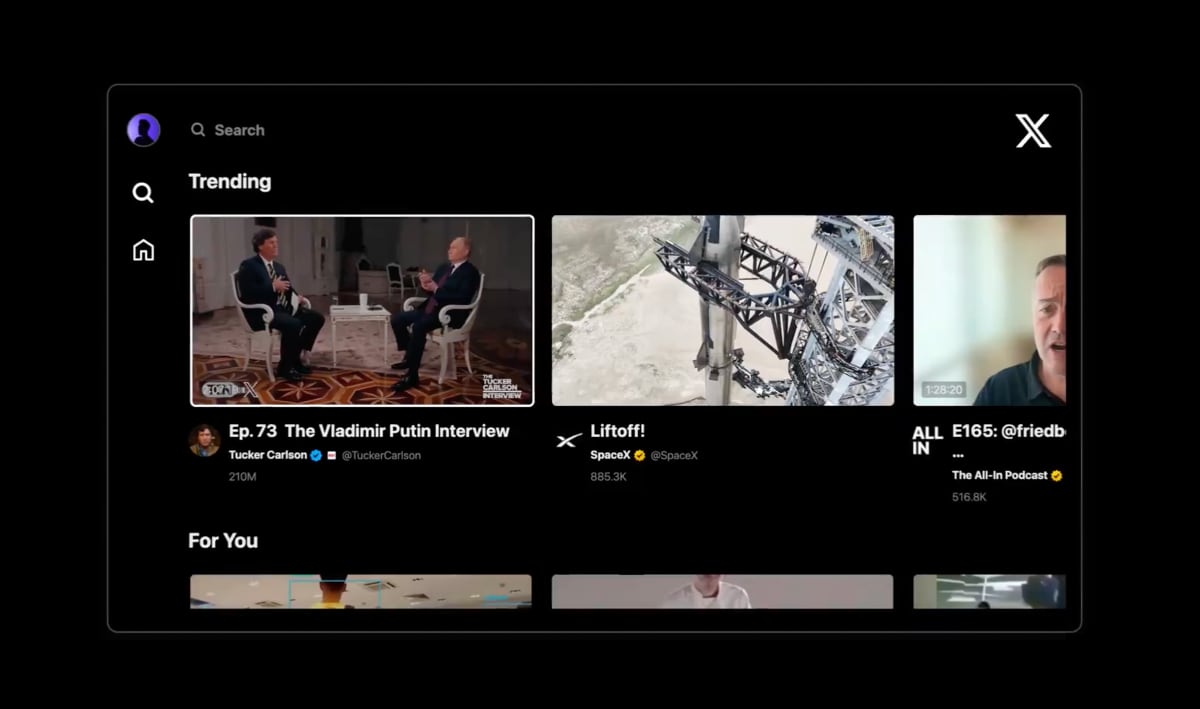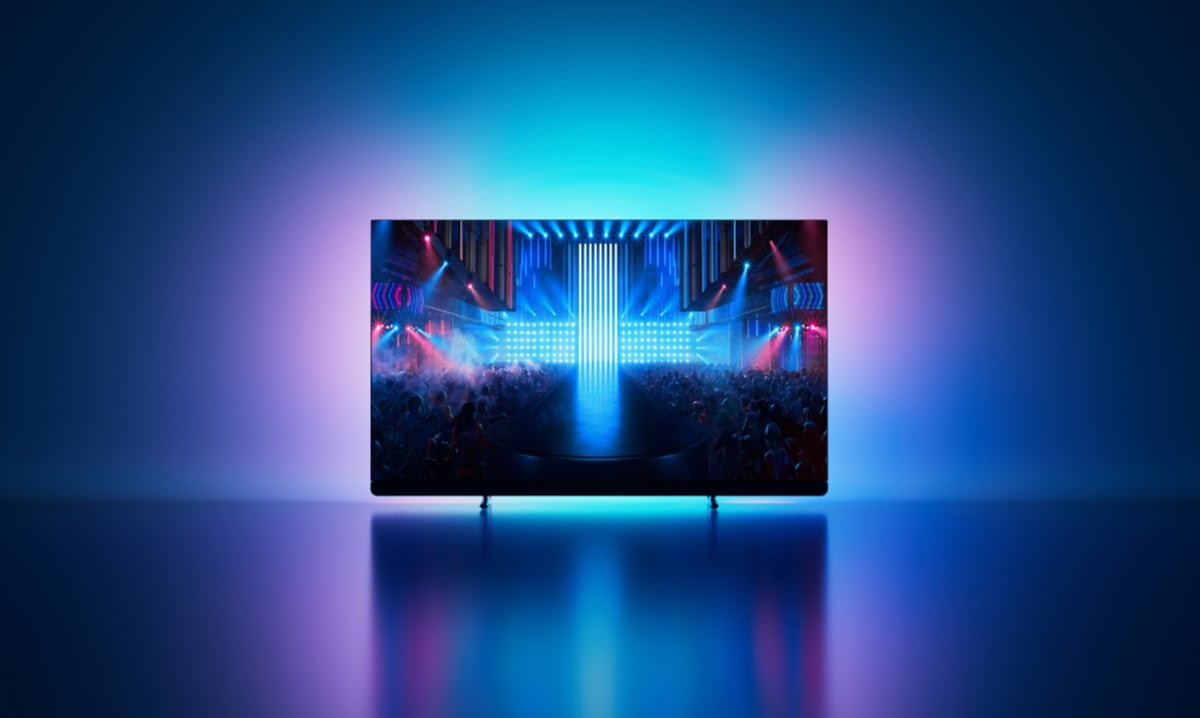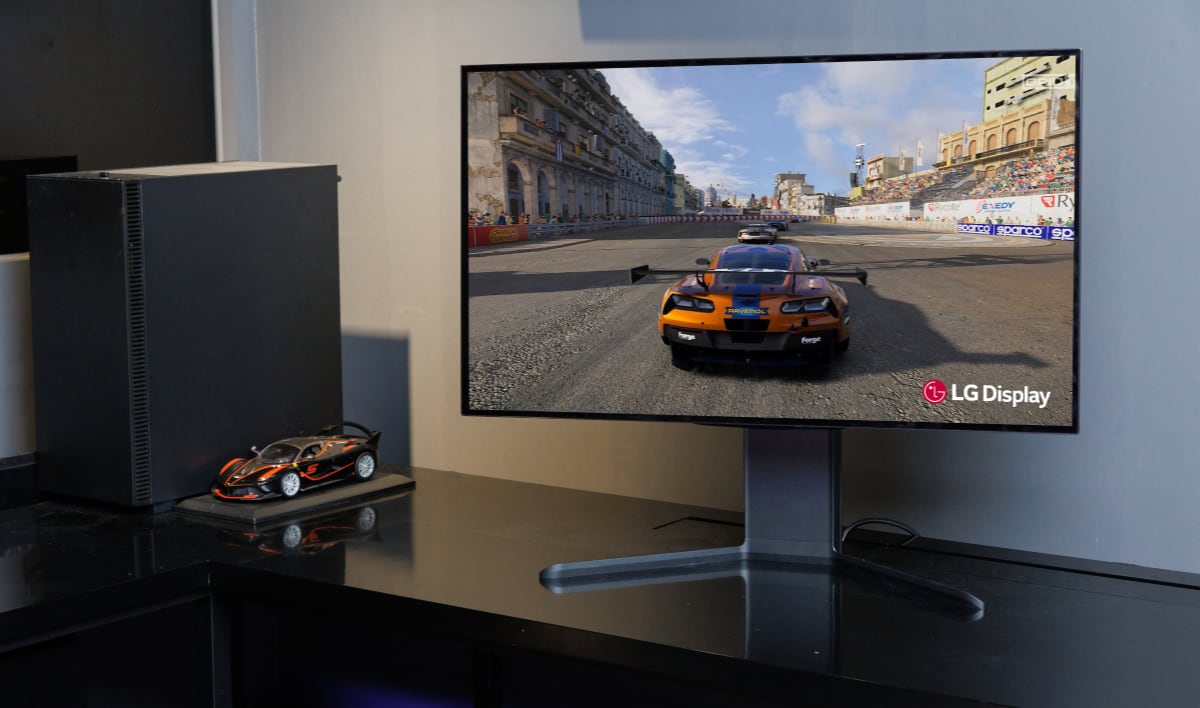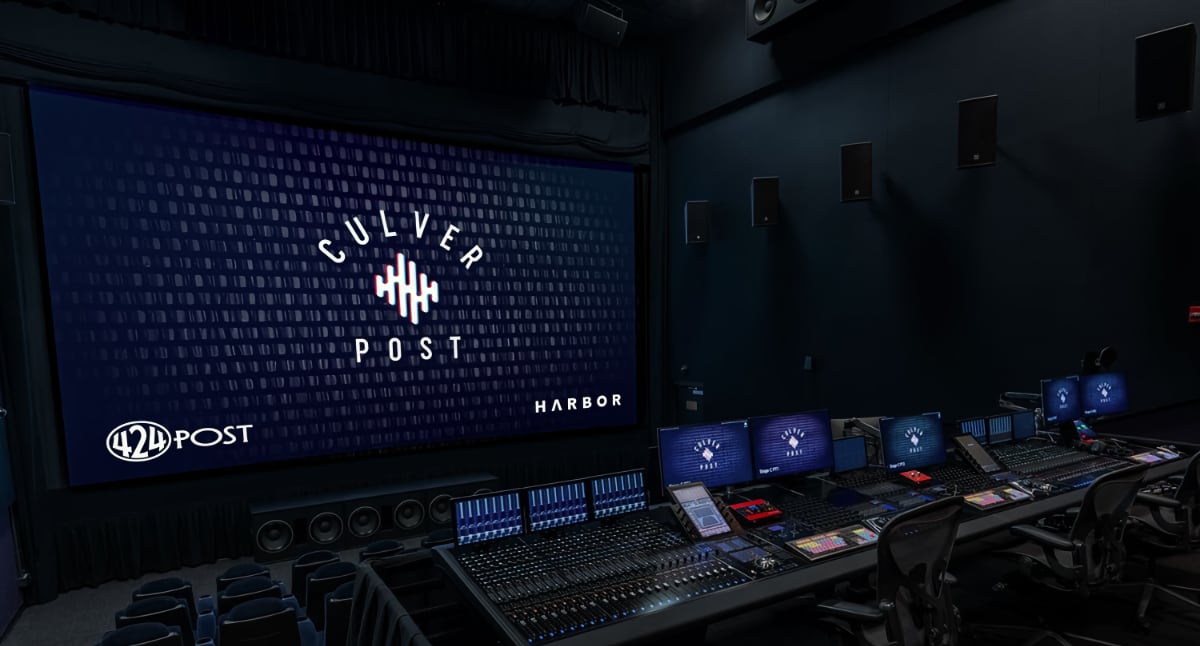Apple has confirmed that the two micro-OLED displays in Vision Pro feature 90/96Hz refresh rate and 23 million pixels in total. Analyst firm DSCC believes that each has 3800x3000 pixels.
Earlier this week, Apple unveiled its Vision Pro which is positioned as a 'spatial computing' device rather than a MR/AR headset.
It can run apps and many other media experiences including games and video.
4K resolution per eye, 90/96Hz
The company did not provide specifications so display analysts are trying to fill in the blanks.
- "According to Apple, each pixel is 7.5um wide and there are 23M pixels across the two panels. That would correspond to roughly 3400 PPI and a resolution of approximately 3800 × 3000 per eye. For comparison, the Bigscreen Beyond has a resolution of 2560 × 2560 per eye," wrote Dr. Guillaume Chansin, Director of Display Research at DSCC.
As you may have seen, Sony is marketing its PlayStation VR2 headset as capable of '4K HDR', despite the two OLED displays each having 2000x2040 resolution. It corresponds to approximately 2K per eye. Apple is saying that Vision Pro has "more pixels than a 4K TV for each eye".
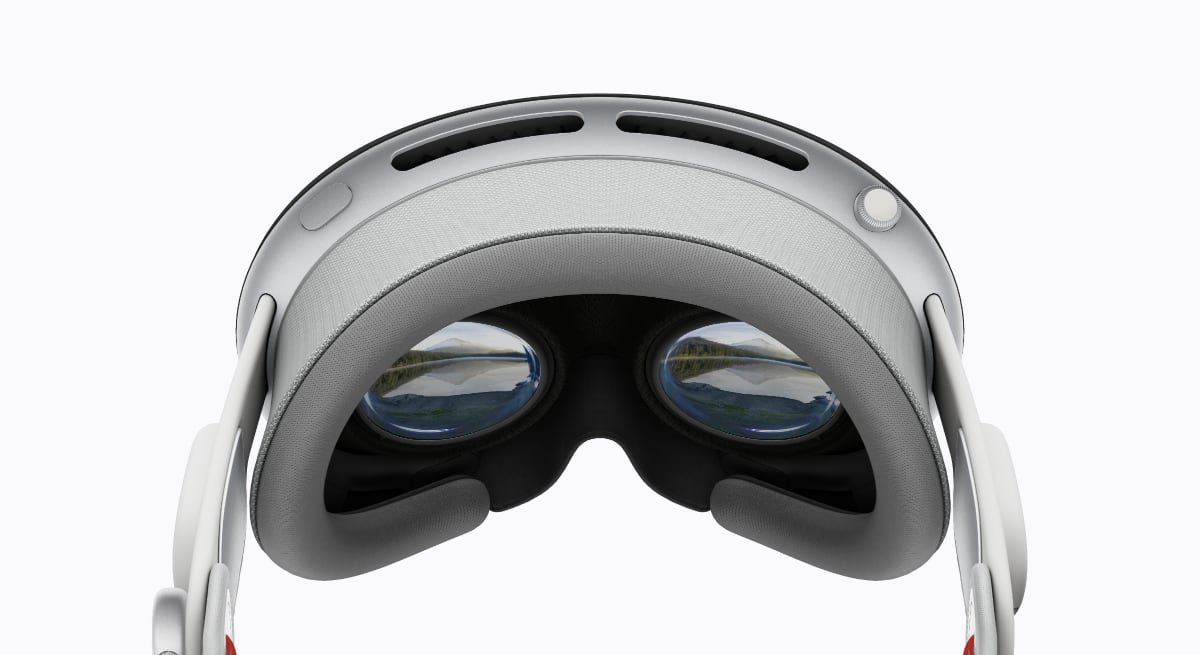
Two Micro-OLED displays, 4K for each eye. Photo: Apple
During a developer presentation at WWDC 23, Apple confirmed that Vision Pro has a default 90Hz refresh rate plus a special 96Hz refresh rate mode for video in 24fps (4x24 = 96) such as movies and series.
DSCC has previously said that the micro-OLED displays deliver over 5000 nits of brightness but a good portion of that is typically lost due to the lenses and the display driving method.
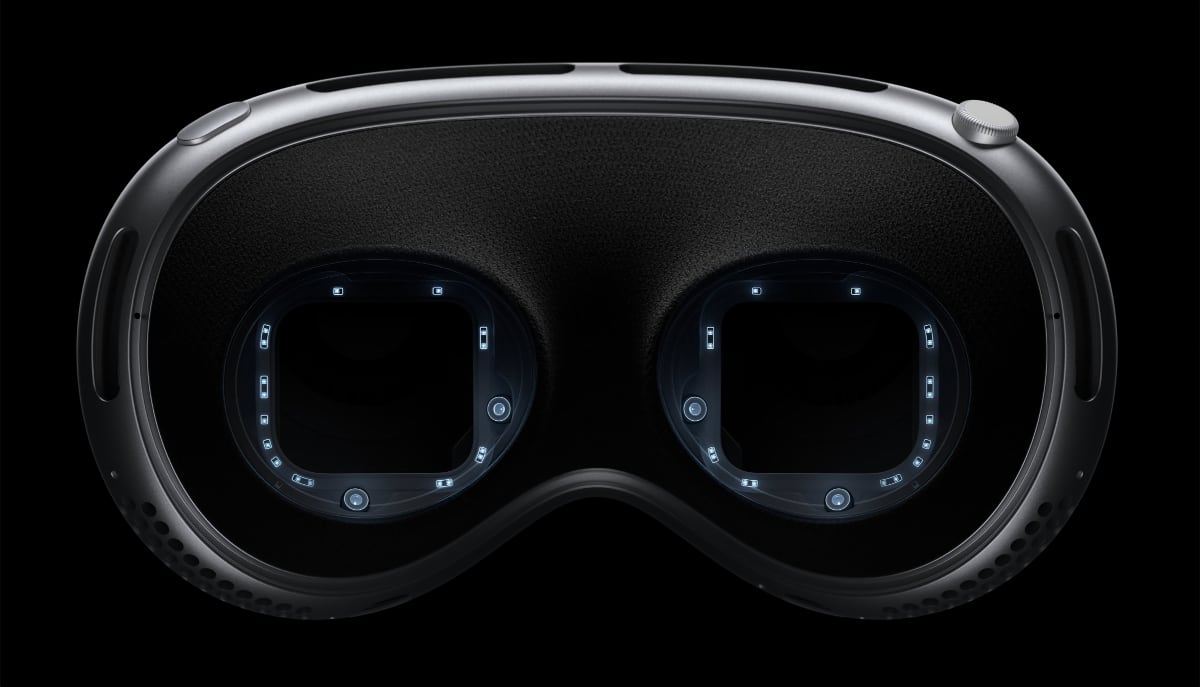
The eye tracking system is made up of LEDs and infrared cameras. Photo: Apple
Potential paradigm shift
Apple proclaimed that Vision Pro uses the most advanced displays it has ever made. The launch marks a potential paradigm shift in the display industry, according to DSCC.
- "For the display industry, this is the potential paradigm shift: consumers can have access to multiple screens with a single headset. Moreover, the two primary displays in Apple’s headset are based on OLED-on-Silicon technology (often labelled as Micro OLED), so the backplanes are made in semiconductor foundries instead of display fabs," said Chansin.
In other words, makers of chips such as TSMC may become the future stars of display production. DSCC added that for the two micro-OLED displays in Apple's Vision Pro the silicon backplane is made by TSMC, while the white OLED with color filters frontplane is from Sony. The front OLED display used to show your eyes to the outside world is made by LG Display.
Higher resolution in the future
TSMC has the capabilities to mass-produce semiconductors for chips on a 5nm node – and soon 3nm – but at this time the micro-OLED displays are manufactured on a legacy node, confirmed DSCC. In the future, micro-OLED can be moved to a more advanced node to drastically increase pixel density, i.e. resolution.
DSCC predicts that micro-OLED will "quickly gain market share over other display technologies and eventually dominate the AR/VR market". Meta's Quest headsets all use conventional LCD technology.
And someday these production methods may even be feasible for larger displays.
- Source: Apple, DSCC



